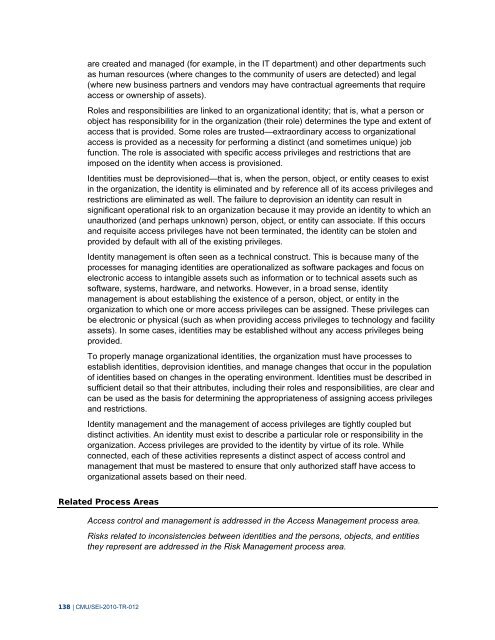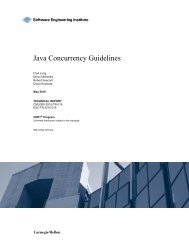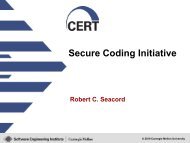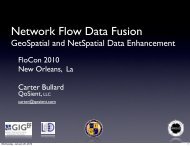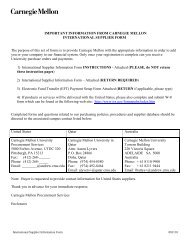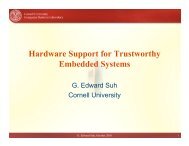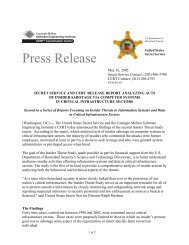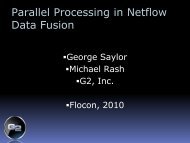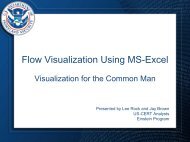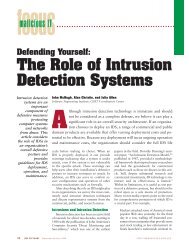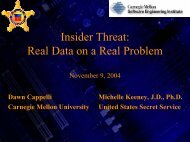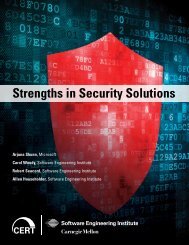CERT Resilience Management Model, Version 1.0
CERT Resilience Management Model, Version 1.0
CERT Resilience Management Model, Version 1.0
- No tags were found...
You also want an ePaper? Increase the reach of your titles
YUMPU automatically turns print PDFs into web optimized ePapers that Google loves.
are created and managed (for example, in the IT department) and other departments suchas human resources (where changes to the community of users are detected) and legal(where new business partners and vendors may have contractual agreements that requireaccess or ownership of assets).Roles and responsibilities are linked to an organizational identity; that is, what a person orobject has responsibility for in the organization (their role) determines the type and extent ofaccess that is provided. Some roles are trusted—extraordinary access to organizationalaccess is provided as a necessity for performing a distinct (and sometimes unique) jobfunction. The role is associated with specific access privileges and restrictions that areimposed on the identity when access is provisioned.Identities must be deprovisioned—that is, when the person, object, or entity ceases to existin the organization, the identity is eliminated and by reference all of its access privileges andrestrictions are eliminated as well. The failure to deprovision an identity can result insignificant operational risk to an organization because it may provide an identity to which anunauthorized (and perhaps unknown) person, object, or entity can associate. If this occursand requisite access privileges have not been terminated, the identity can be stolen andprovided by default with all of the existing privileges.Identity management is often seen as a technical construct. This is because many of theprocesses for managing identities are operationalized as software packages and focus onelectronic access to intangible assets such as information or to technical assets such assoftware, systems, hardware, and networks. However, in a broad sense, identitymanagement is about establishing the existence of a person, object, or entity in theorganization to which one or more access privileges can be assigned. These privileges canbe electronic or physical (such as when providing access privileges to technology and facilityassets). In some cases, identities may be established without any access privileges beingprovided.To properly manage organizational identities, the organization must have processes toestablish identities, deprovision identities, and manage changes that occur in the populationof identities based on changes in the operating environment. Identities must be described insufficient detail so that their attributes, including their roles and responsibilities, are clear andcan be used as the basis for determining the appropriateness of assigning access privilegesand restrictions.Identity management and the management of access privileges are tightly coupled butdistinct activities. An identity must exist to describe a particular role or responsibility in theorganization. Access privileges are provided to the identity by virtue of its role. Whileconnected, each of these activities represents a distinct aspect of access control andmanagement that must be mastered to ensure that only authorized staff have access toorganizational assets based on their need.Related Process AreasAccess control and management is addressed in the Access <strong>Management</strong> process area.Risks related to inconsistencies between identities and the persons, objects, and entitiesthey represent are addressed in the Risk <strong>Management</strong> process area.138 | CMU/SEI-2010-TR-012


